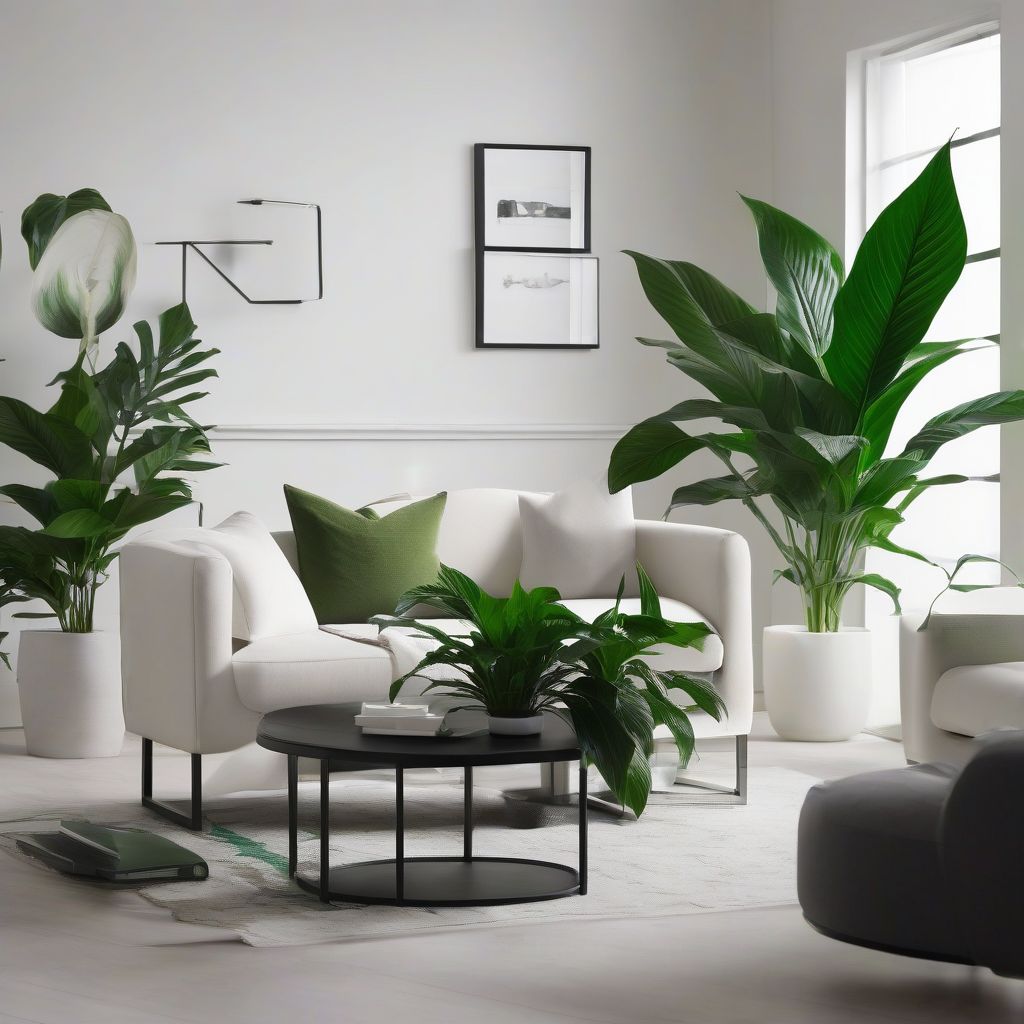Have you ever walked into a room adorned with lush greenery and felt an instant sense of peace and tranquility wash over you? That’s the power of plants. But did you know that the strategic use of color and texture in your plant choices can elevate your decor from simply “nice” to absolutely breathtaking? It’s true! Just like a painter uses a palette of colors and brushstrokes to create a masterpiece, you too can transform your living space into a vibrant, inviting oasis with the right blend of plant textures and hues.
Unveiling the Impact of Color in Plant Design
Color is a powerful tool in interior design, and incorporating it through plants is a fantastic way to infuse life and personality into your home.
Creating Mood and Ambiance
- Green, the Color of Serenity: We all know green is synonymous with nature, but did you know different shades can evoke various emotions? Deep forest greens promote a sense of calm and grounding, while vibrant lime greens energize and uplift.
- Bold and Beautiful Blooms: Don’t be afraid to add pops of color! A fiery red Anthurium can ignite passion, while delicate pink orchids whisper elegance and grace. Consider the mood you want to create in each room and select plants with colors that support that vision.
- The Power of Contrast: Just as in fashion, contrasting colors create visual interest. Imagine a dark green ZZ plant juxtaposed against a creamy white Peace Lily—the effect is striking and sophisticated.
 Contrasting Plants in Interior Design
Contrasting Plants in Interior Design
Playing with Light and Shadow
- Brightening Up with Brights: In rooms with limited natural light, incorporating plants with bright yellows and oranges, like a cheerful Gerbera Daisy or a sunny Bird of Paradise, can mimic the effect of sunshine and make the space feel more open and airy.
- Embracing the Shadows: For dimly lit corners, choose plants that thrive in low light and feature deep, rich hues. Think a majestic Snake Plant with its dark green and silvery-grey patterns or the elegant, deep purple leaves of a Tradescantia.
The Underrated Power of Texture in Plant Design
Texture often takes a backseat to color, but it’s equally important in creating a visually dynamic and engaging space.
Visual Interest and Depth
- A Symphony of Shapes and Sizes: Mixing plants with different leaf shapes and sizes adds visual intrigue. Imagine the contrast between the delicate, feathery fronds of an Asparagus Fern and the large, architectural leaves of a Monstera Deliciosa. The interplay of these textures creates a captivating focal point.
- Creating Depth and Dimension: Just as different textures in a painting add depth, so too can plants. Place a tall, spiky Snake Plant behind a trailing, cascading Pothos to create a sense of depth and dimension in a small space.
Tactile Appeal and Sensory Experience
- Inviting Touch: Incorporating plants with a variety of textures encourages interaction and adds a sensory element to your decor. The soft, fuzzy leaves of a Lamb’s Ear plant or the smooth, cool surface of a Jade Plant provide a tactile experience that connects us with nature.
- Adding Movement and Sound: Don’t forget about the textural elements that bring sound and movement! The gentle rustling of a Spider Plant’s leaves in a gentle breeze or the delicate chimes of a wind chime adorned with air plants can transform your space into a sensory haven.
 Textured Plants for a Sensory Experience
Textured Plants for a Sensory Experience
Creating Your Green Masterpiece: Tips for Combining Color and Texture
Ready to transform your home into a verdant sanctuary? Here are some tips to get you started:
- Start with a Neutral Base: Choose larger plants with neutral green tones as your foundation. Then, add pops of color and contrasting textures with smaller plants and flowers.
- Consider Your Existing Decor: Your plants should complement your existing furniture and color scheme. If your home has a minimalist aesthetic, opt for plants with clean lines and simple forms. If your style is more bohemian, embrace a mix of vibrant colors and textures.
- Don’t Be Afraid to Experiment: Plant decorating is all about having fun and expressing your creativity! Don’t be afraid to experiment with different combinations until you find what speaks to you.
Conclusion: Bringing Your Vision to Life
Creating a beautiful and inviting space with plants is easier than you think. By understanding the role of color and texture, you can transform your home into a vibrant, thriving oasis. Remember, the most important ingredient is your own creativity!
So go ahead, embrace your inner plant stylist, and let your home blossom into a reflection of your unique style and personality.
Now it’s your turn! What are your favorite ways to incorporate color and texture in your plant decorating? Share your tips and tricks in the comments below!
No products found.
